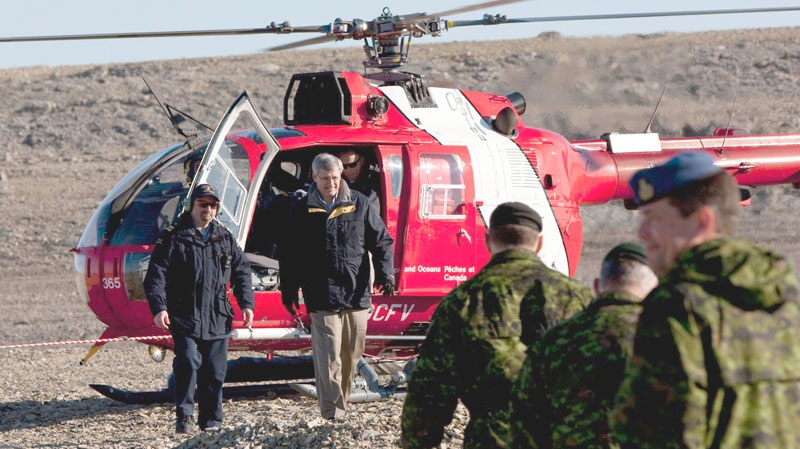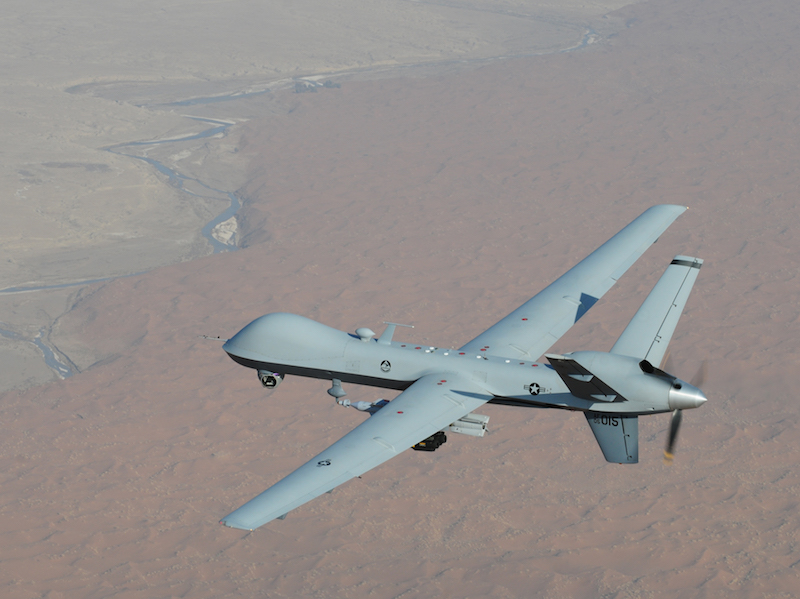The environment in the North is heating up today in more ways than one. Claims to undersea resources and international shipping routes in the face of rising temperatures and expanding economic prospects are pushing governments of circumpolar nations into conflict and competition over the extent and nature of their sovereignty in the North. This two-part article will assess Canada’s procurement for its arctic sovereignty mission.
[quote align=”center” color=”black”]”Multilateralism and international law are the most likely battlegrounds in the fight for the arctic”[/quote]
The strategies being employed to secure the goals of Canada’s Northern Strategy can be summed up with a single mantra: presence. Claims that challenge Canadian sovereignty in the Canadian Arctic become increasingly untenable on the international stage if Canada is seen to be regularly exercising jurisdictional authority over the most critical regions in question.
[captionpix align=”left” theme=”elegant” width=”300″ imgsrc=”http://natoassociation.ca/wp-content/uploads/2014/03/sovern2.jpg”]
One of the most significant procurement plans presented under the Harper government centres on the National Ship Procurement Strategy (NSPS). The elements directly pertaining to Canadian arctic sovereignty consist of a new fleet of Arctic Offshore Patrol Ships (A/OPS) for the Royal Canadian Navy, and a new Polar Icebreaker for the Canadian Coast Guard.
Taking each of these in turn, we are reminded that large procurement projects rarely go according to plan. The A/OPS project, though currently still in its definition phase, already has a colourful developmental history. The project was originally conceived as a part of the Conservative Party’s election campaign in 2005/2006 in the form of three armed heavy icebreakers. These ships were clearly thought of as specialized arctic vessels with substantial year-round capabilities, but the project has steadily devolved towards a focus on versatility, expanding their applications to a mix between conventional temperate and light-arctic environments.
The A/OPS project has led many critics to argue that the vessel will be a poor performer on many counts. Its armaments are expected to be very light with its main gun, a 25mm-40mm Remote Weapon Station, typically found on similar size ships as a support weapon. Furthermore, at Polar Class 5, this “slush breaker” will only be capable of navigating arctic ice in the summertime, and because of the added bulk required to attain this classification, it will be a heavy and inefficient patroller of temperate seas. 6 to 8 ships are to be constructed by Irving Shipbuilding in Halifax as part of the NSPS. Work is slated to begin in 2015, but with a history of development delays, this may be an overly optimistic start date.
Finally, the Polar Icebreaker CCGS John G. Diefenbaker, described as one of the centrepieces of Canada’s Northern Strategy, represents the first significant investment in the Canadian Coast Guard (CCG) fleet in almost 30 years. It is expected to be a welcome replacement for the aging flagship of the CCG, the CCGS Louis St. Laurent, but space is very tight at the Seaspan-Vancouver Shipyard contracted under the NSPS to build all the scheduled large non-combat vessels. The shipyard must first commence construction on the Offshore Fisheries Science Vessel, the Offshore Oceanographic Science Vessel, and the Joint Support Ships before steel is cut for the icebreaker. Needless to say, its date of completion is uncertain. The Canadian Coast Guard is also expected to face strain under the new and changing demands of its mission in the arctic, leaving some to question whether one vessel will be enough.
[captionpix align=”left” theme=”elegant” width=”300″ imgsrc=”http://natoassociation.ca/wp-content/uploads/2014/03/NSPS-Secretariat-Gives-Update-on-National-Shipbuilding-Procurement-Strategy.jpg”]
Suffice to say, this snapshot of Canada’s recent efforts to claim its arctic sovereignty are off to a slushy start. The most questionable element has to be A/OPS program, which appears to spread the intended operational purpose of the vessel too thinly. The notion that presence is critical “proof” of sovereignty does not appear to be served by a ship that can only spend a third of the year in the environment it was originally tasked to operate in.
It is also surprising that Canada has given such weight to increasing (albeit lightly) its militarized presence in the arctic. Analysts from the Department of National Defence, for instance, have already indicated that Russia has been exercising its sovereign rights only within its own territory, and that this is predominantly driven by economic interest. Multilateralism and international law are the most likely battlegrounds in the fight for the arctic. If policy makers are insistent on hard power complimenting their soft power presence to enforce sovereignty, an article at the Canadian American Strategic Review mentions a “hybrid, partly-militarized” coast guard as an effective solution. Though a civilian organization, it already has some experience operating armed vessels, and with the parameters of its arctic mission in flux, the prospect deserves a close look.
Next week, please join me in investigating how Canada’s procurement for arctic sovereignty can be seen on a more positive note as path-breaking.




